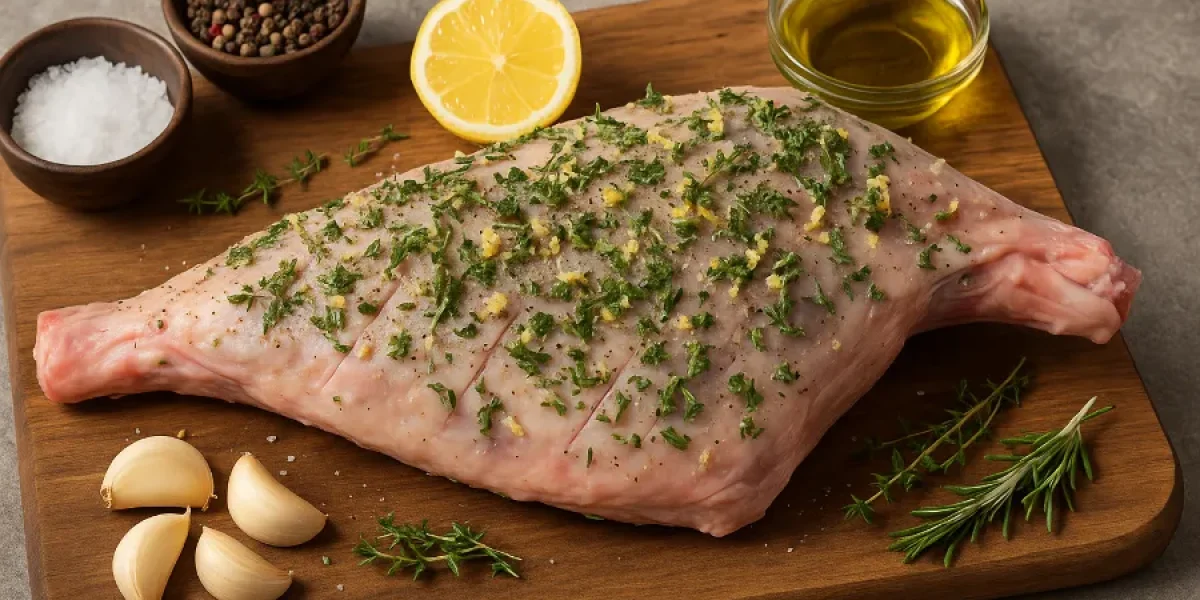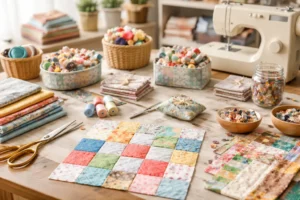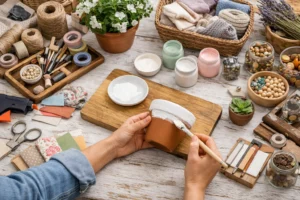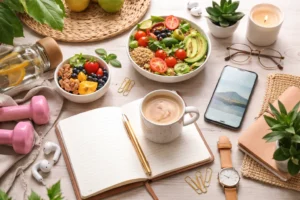I’ll be honest — I used to be intimidated by lamb. Something about its rich aroma and deep flavor made me feel like it belonged only in restaurant kitchens. But once I learned how to build the perfect lamb rub, everything changed. Now, roasted lamb isn’t just a special-occasion meal in my home — it’s my signature dish.
A great lamb rub doesn’t just season the meat; it transforms it. It creates that golden, aromatic crust, locks in juices, and layers the kind of flavor that makes people close their eyes at the first bite. Whether you’re using herbs from your own garden or ingredients from the pantry, mastering this is how you take lamb from “good” to “unforgettable.”
Roasted Lamb – Why Seasoning Makes or Breaks It
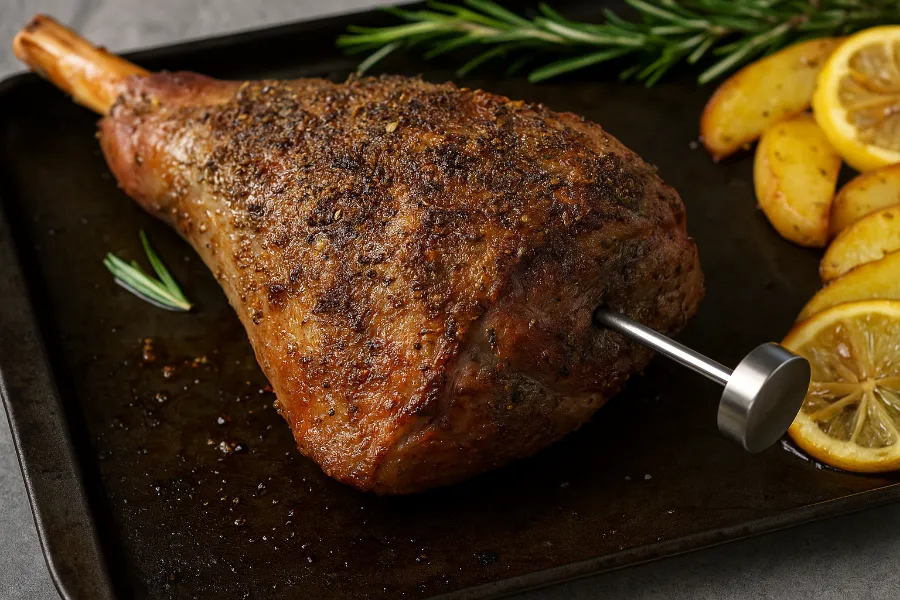
There’s nothing quite like roasted lamb coming out of the oven — sizzling, fragrant, and beautifully browned. But that magic starts long before the roasting pan.
The lamb’s natural richness needs balance: salt to enhance flavor, acid to brighten, and herbs to add freshness. Without that balance, roasted lamb can taste flat or too heavy. That’s where a well-built lamb rub comes in — it’s your flavor architecture, your map for how this roast will taste from the first bite to the last.
When I make roasted lamb for family dinners, I start by trimming any excess fat but leave just enough for basting. Then I pat it dry (so the rub sticks properly) and score the surface lightly to let the flavors sink in.
That’s when the fun begins — the rub.
Lamb Rub – The Heart of Every Great Roast
A lamb rub is more than a mixture of salt and herbs. It’s how you personalize your dish — your signature. Some people like it bright and citrusy, others go smoky and deep. I’ve learned that the best rubs strike a perfect balance of salt, fat, and freshness.
Here’s my go-to blend when I want something classic yet full of depth:
My Everyday Lamb Rub Recipe
- 3 tablespoons olive oil
- 1 tablespoon sea salt
- 2 teaspoons cracked black pepper
- 1 tablespoon fresh rosemary, finely chopped
- 1 tablespoon fresh thyme
- 3 cloves garlic, minced
- 1 teaspoon lemon zest
Rub it generously all over the lamb, making sure to press it into every slit and crevice. Let it sit at room temperature for about 30 minutes before roasting — this helps the seasoning penetrate and the meat cook evenly.
When that leg or shoulder hits the oven, the rosemary and garlic start to toast, and the lemon zest perfumes the whole kitchen. That’s when you know dinner will be special.
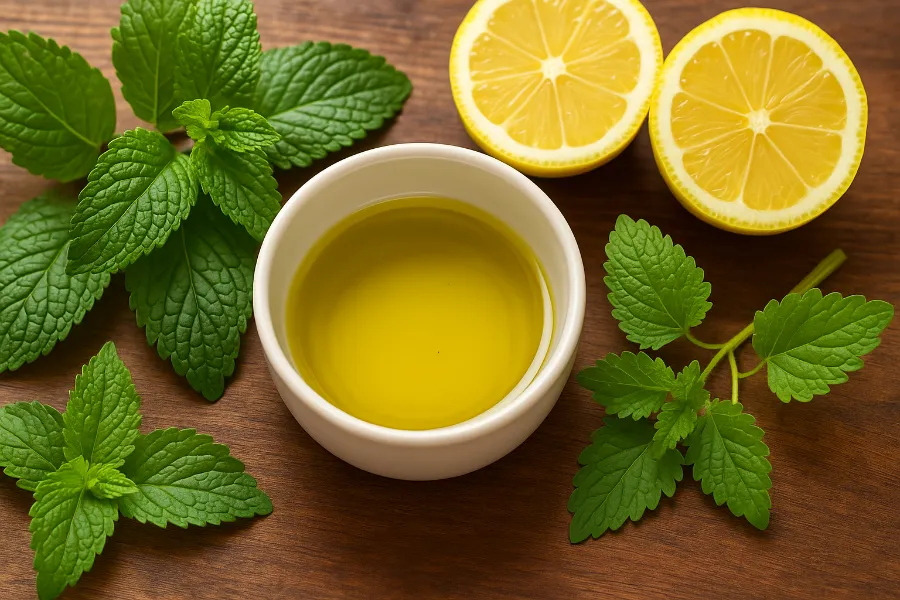
Lamb Marinade – When to Go Beyond the Rub
Sometimes, a lamb marinade is the better move — especially for leaner cuts or when you want a softer, more infused flavor. A marinade works deeper, soaking into the fibers, tenderizing as it seasons.
If I’m marinating, I go for something simple, natural, and balanced:
Simple Yogurt Lamb Marinade
- 1 cup plain Greek yogurt
- 2 tablespoons olive oil
- Juice of one lemon
- 2 garlic cloves, crushed
- 1 tablespoon chopped mint
- 1 teaspoon salt
Mix everything and coat your lamb completely. Cover and refrigerate for at least 4 hours — overnight if you can. Before roasting, I like to pat off the excess marinade and apply a light dry rub on top. That way, you get tenderness from the marinade and texture from the rub.
It’s like layering flavor armor — tender inside, crisp and aromatic outside.
Lamb Recipe – The Roast That Never Fails
When friends come over, this is the lamb recipe I always reach for. It’s foolproof, simple, and deeply satisfying. The secret is patience — and trusting the process.
Herb-Crusted Roasted Lamb Recipe
Ingredients:
- 1 leg of lamb (4–5 pounds)
- My Everyday Lamb Rub (from above)
- 2 tablespoons olive oil
- 1 tablespoon Dijon mustard (optional, for extra crust)
Instructions:
- Preheat the oven to 450°F (230°C).
- Prepare the lamb: pat dry and score shallow lines on the surface.
- Rub: Apply the lamb rub evenly, pressing it into the meat.
- Roast at 450°F for 15 minutes to sear the exterior.
- Reduce heat to 350°F (175°C) and continue roasting 1.5 to 2 hours (or until internal temperature reaches 135°F for medium-rare).
- Rest the lamb for 15–20 minutes before slicing.
The result? A roasted lamb that’s tender, juicy, and covered in a crisp, herb-scented crust that tastes like pure Sunday comfort.
The Mediterranean Twist – A Fresh Take on the Lamb Rub
If there’s one regional influence that defines lamb, it’s the Mediterranean. Their use of lemon, herbs, and olive oil creates something timeless — clean, bright, and aromatic.
Here’s my Mediterranean Lamb Rub when I want to impress without overcomplicating things:
- 4 tablespoons extra virgin olive oil
- 1 tablespoon sea salt
- 1 teaspoon black pepper
- 2 tablespoons fresh rosemary, chopped
- 1 tablespoon oregano
- 3 garlic cloves, minced
- Zest and juice of one lemon
Mix it into a paste and massage it into your lamb. The lemon cuts through the richness while the herbs bring out a floral, almost woodsy note that pairs beautifully with roasted vegetables or couscous.
Roasted Lamb with Moroccan Flair
Sometimes I crave boldness — that punch of warm spices that fills the kitchen with color. For that, I turn to a Moroccan-inspired lamb rub that uses pantry spices to create something unforgettable.
Moroccan Spice Rub:
- 2 teaspoons ground cumin
- 1 teaspoon coriander
- 1 teaspoon cinnamon
- 1 teaspoon smoked paprika
- ½ teaspoon cayenne
- 1 teaspoon salt
- 2 tablespoons olive oil
- 1 tablespoon honey
This rub creates a golden, caramelized crust that’s both savory and slightly sweet. It’s incredible with roasted carrots, mint yogurt sauce, or even flatbread on the side.
Choosing Between a Rub and Marinade – What I’ve Learned
Over time, I’ve realized there’s no “one right way” to flavor lamb. It depends on the mood, the cut, and the time you have.
- If I want crisp edges and quick prep, I go for a dry lamb rub.
- If I want soft, tender meat, especially for boneless cuts, I go for a lamb marinade.
- And sometimes, I combine them — marinate first, then finish with a rub before roasting.
That’s the magic of lamb: it’s versatile. It welcomes experimentation.
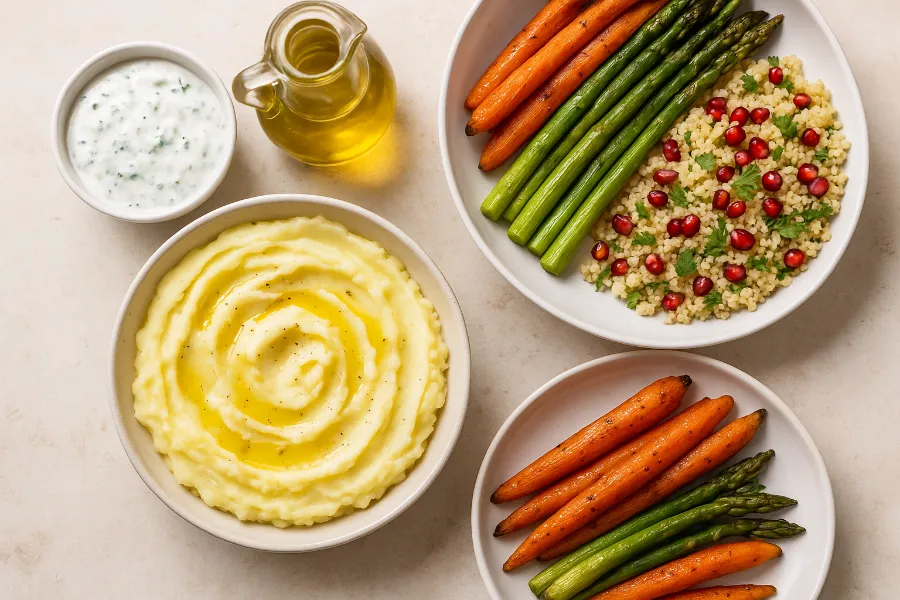
Organic and Plant-Based Rub Ideas
Even if you’re not vegan, plant-based and organic flavoring can bring freshness and clarity to your lamb. I like to think of these as “clean rubs” — full of life, light, and herbal energy.
Here are a few combinations I love experimenting with:
- Mint + Lemon Balm + Olive Oil: Bright, refreshing, and perfect for spring.
- Black Garlic + Balsamic + Thyme: Deeply umami without being heavy.
- Coconut Oil + Coriander + Smoked Paprika: Warm, naturally aromatic, and a little unexpected.
They’re all safe, natural, and easy on the planet — proving that great flavor doesn’t need additives or artificial boosters.
My Tips for the Perfect Roasted Lamb Every Time
- Let It Rest: Before and after roasting — it’s non-negotiable. Resting lets flavors settle and juices stay put.
- Don’t Overcrowd the Pan: Give your lamb room to roast evenly.
- Use a Meat Thermometer: It takes the guesswork out. Aim for 135°F for medium-rare.
- Pair Your Flavors: If your rub is herb-heavy, keep your sides simple (like lemon-roasted potatoes). If your rub is spicy, cool it down with yogurt or mint sauce.
- Taste the Rub Before Applying: Always. If it tastes amazing on your finger, it’ll taste amazing on your lamb.
Serving Ideas That Complete the Roast
Once your roasted lamb is done and resting, that’s when I start pulling together sides that harmonize with it — not compete.
Try pairing with:
- Garlic mashed potatoes drizzled with olive oil
- Roasted carrots or asparagus
- Mint yogurt sauce
- Couscous with pomegranate and parsley
- A crisp green salad with lemon vinaigrette
Each side echoes the same balance of freshness, salt, and richness — like an orchestra working together around one star: the lamb.
Why the Right Lamb Rub Changes Everything
Here’s the truth: you don’t need fancy tools or a Michelin kitchen to make incredible lamb. What you really need is confidence in your seasoning. Once you understand how to balance herbs, acid, salt, and fat, you can make lamb that rivals any fine dining restaurant.
Every time I roast a leg of lamb now, I’m reminded that it’s not just about cooking — it’s about creating a moment. The scent of rosemary, the golden crust, the laughter around the table — all of it starts with something as humble as a lamb rub.
So go ahead. Mix, taste, adjust, and make it yours. Because when you do, you won’t just be serving lamb — you’ll be serving comfort, warmth, and a story that lingers long after dinner’s done.
FAQs
A classic mix of olive oil, garlic, rosemary, thyme, and lemon zest makes a perfect lamb rub. It enhances the meat’s natural flavor while creating a fragrant crust when roasted.
Yes, but use a light hand. Marinating after rubbing works best when the rub contains herbs and spices that complement your marinade’s base.
Let the lamb rest with the rub for at least 30 minutes at room temperature or refrigerate overnight for deeper flavor. This helps the seasoning absorb evenly.
Absolutely. You can make a dry lamb rub using herbs, salt, and spices only — but adding a bit of oil helps bind the ingredients and promote browning during roasting.
A rub coats the surface and forms a crust during cooking, while a marinade soaks into the meat to tenderize it. Many cooks use both for balanced flavor and texture.
Yes! The same rub works for grilled or roasted lamb. Just adjust the oil content slightly — use more for grilling to prevent the spices from burning.
Use natural ingredients like fresh herbs, lemon juice, olive oil, black garlic, and sea salt. They create clean, balanced flavor without artificial additives.

